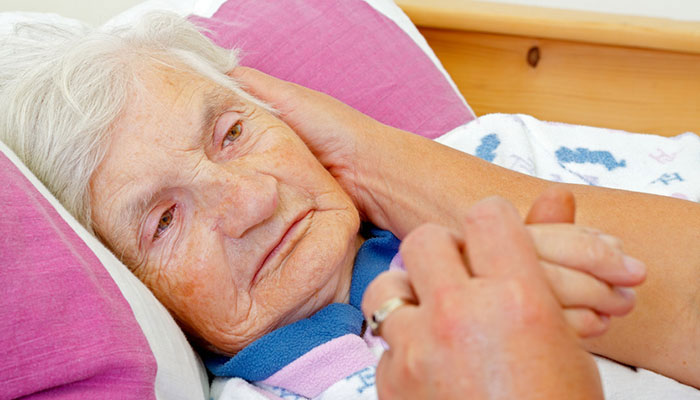
Sepsis occurs when the body overreacts to an infection. Its occurrence is on the rise, and it is deadly.
You don’t catch sepsis from someone else. It’s a complication of an existing infection—of the lungs (pneumonia), bladder, or skin, for instance. With sepsis, the normal healing process goes awry. A too-massive immune response spreads through the bloodstream, causing inflammation throughout the body.
Not caught in time, sepsis lowers the blood pressure dramatically. This in turn damages key organs. An estimated 15%–30% of people diagnosed with sepsis die from it. Serious stuff!
Signs of sepsis. The earliest signs in older adults include sudden confusion and extreme fatigue. Some people also experience a fever and chills, clamminess, nausea, faster breathing, and a faster heartrate.
Watch carefully. If the person you care for has an infection and is being treated with antibiotics, keep an eye on things. Make sure that medications are being taken as ordered. Ask yourself if the recovery seems to be progressing as you would expect.
If you see a sudden downturn, call the doctor immediately. The chances of a solid recovery from sepsis are much better if your loved one gets to urgent care or the hospital and is treated within a few hours.
Avoiding sepsis. Preventing infections is the best way to avert this dangerous condition.
- Get a pneumonia vaccine. Pneumonia is the most common infection to lead to sepsis. See our articles on preventing pneumonia at home, and avoiding pneumonia in the hospital and preventing aspiration pneumonia.
- Stay current with the flu vaccine. Many people get pneumonia after the flu, so avoiding the flu is a great way to avoid pneumonia and potential sepsis.
- Clean scrapes and wounds thoroughly. Even a mild infection can trigger a septic reaction.
- Practice good hygiene. Washing hands and brushing teeth get rid of many of the germs that cause infections.

